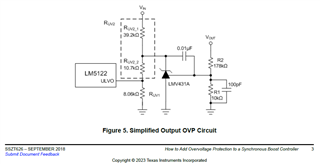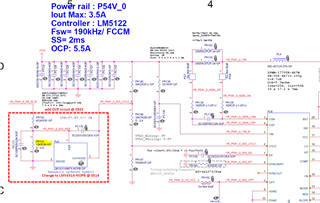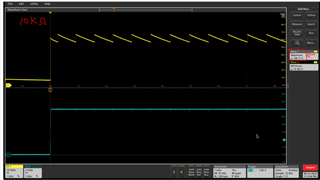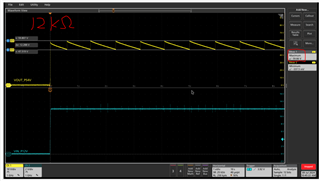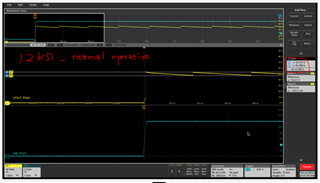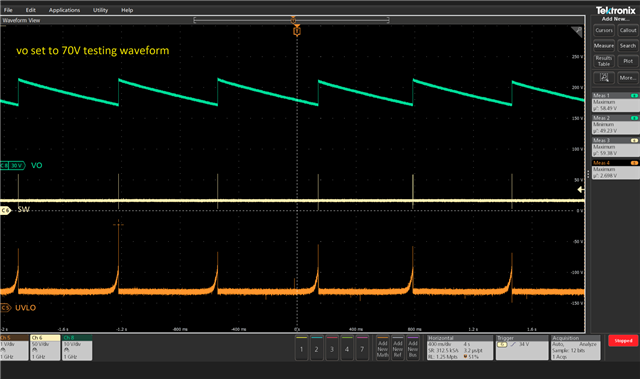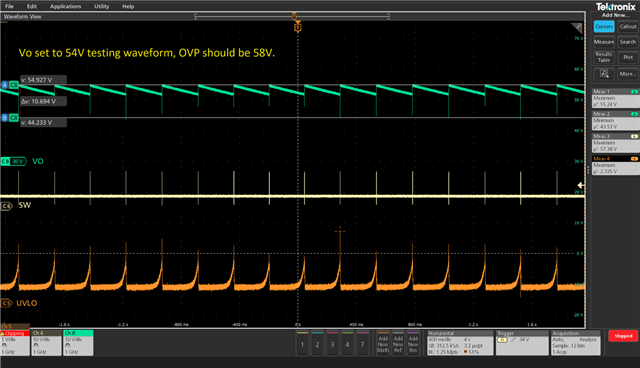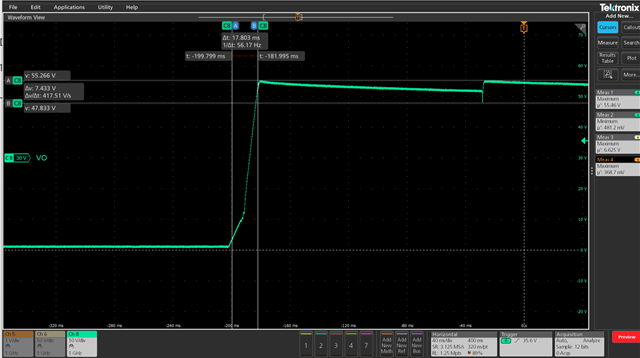Other Parts Discussed in Thread: LMV431
Tool/software:
Hi TI Team,
I follow TI's circuit and apply in our design for Over Voltage protection, in Vout=54V application, R1=10k (PR191), R2=453K (PR192), OVP setting point should be 57.412V (Eq.3)
In real test, why the Vout clamp in 68.11V?
Since our OVP target is clamp Vout<60V, I try to modify PR191 from 10k to 12k, although the OVP could clamp in 59.66V, but this modification already impact the normal operation.
How to sett he OVP <60V, and won't impact the normal operation as well? Please help to clarify this issue, thanks!

